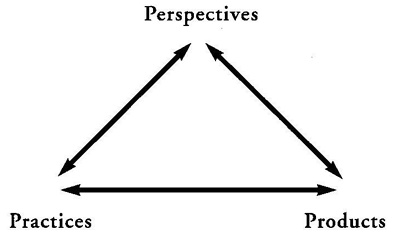
Please use one of the models below as a guide when developing your lesson. All lessons submitted should fall under one of the models or guidelines detailed for this project (PACE, Interactive Listening/Reading [either version], or Culture Lesson).
PACE MODEL: GRAMMAR INSTRUCTION GUIDELINES
Design a lesson that integrates formal grammar instruction in the context
of a whole-language approach, using the PACE
model (Adair-Hauck & Donato, cited in Shrum & Glisan (2000), p.
154-157).
| Stages |
| A. Presentation
B. Attention C. Co-Construct Explanation D. Extension Activity |
INTERACTIVE MODEL FOR LISTENING/READINGGUIDELINES
Design lessons using authentic materials that include stages from one
of the following versions of the model (Shrum & Glisan, 2000; pp. 135-137):
| Model I | Model II |
| A. Pre-listening/Pre-reading
B. Identify main elements C. Identify details D. Organize/revise main ideas/details E. Recreate text F. React to text/explore intertextuality |
A. Preparation phase
B. Comprehension phase C. Interpretation phase D. Application phase E. Extension phase |
CULTURE LESSON GUIDELINES
While no specific model is required, lessons should conform to the triangulation approach suggested by this Standards goal area:

Practices of Culture: Students demonstrate an understanding of the relationship between the practices and perspectives of the culture studied.
This standard focuses on the practices that are derived from the traditional ideas and attitudes (perspectives) of a culture. Cultural practices refer to patterns of behavior accepted by a society and deal with aspects of culture such as rites of passage, the use of forms of discourse, the social “pecking order,” and the use of space. In short, they represent the knowledge of “what to do when and where.” (Standards for Foreign Language Learning in the 21st Century, Executive Summary: http://www.actfl.org/public/articles/execsumm.pdf )
Products of Culture: Students demonstrate an understanding of the relationship between the products and perspectives of the culture studied.
This standard focuses on the products of the culture studied and on how they reflect the perspectives of the culture. Products may be tangible (e.g., a painting, a piece of literature, a pair of chopsticks) or intangible (e.g., an oral tale, a dance, a sacred ritual, a system of education). Whatever the form of the product, its presence within the culture is required or justified by the underlying beliefs and values (perspectives) of that culture. (Standards for Foreign Language Learning in the 21st Century, Executive Summary: http://www.actfl.org/public/articles/execsumm.pdf )